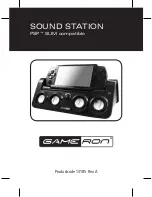
– 7 –
• Sound radiated from a “point source” has the most optimum stereo
imaging because the separation of the acoustical centers between the
midrange and tweeter for each channel is at the optimum. Figure 2-A
describes a horizontal speaker alignment. In a closed environment such
as an automobile, horizontal speaker alignment can cause severe
amplitude and phase differences which will degrade not only the imag-
ing, but also the frequency response. This is due to the path length dif-
ferences between the midrange and tweeter. Figure 2-B displays a verti-
cal alignment between the midrange and tweeter. With a vertical align-
ment, the path length difference between the midrange and tweeter are
reduced to a minimum. The result is a negligible difference in path
lengths between the midrange and tweeter regardless of the proximity
of the listener to the speakers. Mounting the speaker with minimum
path length difference will ensure the best staging and imaging possible
from your audio system.
I
NSTALLATION
Mounting the Midrange
1. Cut the proper size hole for the midrange/woofer (refer to the specifica-
tions page for mounting diameter dimensions)
2. Place the midrange over the mounting hole and mark the location of
the screw mounting holes.
3. Remove the midrange. Drill the holes for the screws using a 1/8" drill
bit.
4. Route the wire through the hole.
5. Attach the wires and be sure to observe the proper speaker polarity.
6. Place the speaker into the hole and screw the speaker into place. Be
careful not to bend the speaker frame during this step.
7. Press the speaker grille into the mounting ring.




































